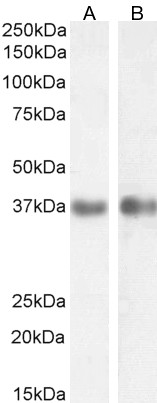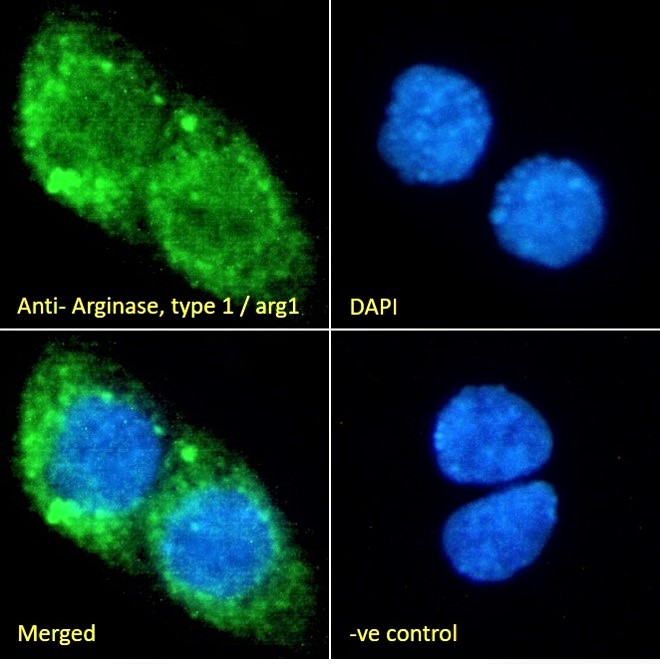Formulation Supplied at 0.5 mg/ml in Tris saline, 0.02% sodium azide, pH7.3 with 0.5% bovine serum albumin.
| |
Unit Size 100 µg | |
Storage Instructions Aliquot and store at -20°C. Minimize freezing and thawing. | |
Synonym / Alias Names arginase 1 liver|AI type I arginase|arginase 1|Arg1 | |
Usage Summary Immunofluorescence: Strong expression of the protein seen in the cytoplasm of HepG2 cells. Recommended concentration: 10µg/ml. | |
Accession ID NP_058830.2 | |
Blocking Peptide EBP07707 | |
Immunogen Peptide with sequence C-NHKPETDYLKPPK, from the C Terminus of the protein sequence according to NP_058830.2. | |
Peptide Sequence C-NHKPETDYLKPPK | |
Purification Method Purified from goat serum by ammonium sulphate precipitation followed by antigen affinity chromatography using the immunizing peptide. | |
Shipping Instructions Refrigerated | |
Predicted Species Mouse, Rat | |
Reactive Species Human, Mouse, Rat | |
Mouse Gene ID 11846 | |
Rat Gene ID 29221 | |
Product Grade  | |
ELISA Detection Limit Antibody detection limit dilution 1:1000. | |
Western Blot Approx 37kDa band observed in Mouse and Rat Liver lysates (calculated MW of 35kDa according to Rat NP_058830.2 and 34.8kDa according to Mouse NP_031508.1). Recommended concentration: 1-3µg/ml. Primary incubation 1 hour at room temperature. | |
Application Type Pep-ELISA, WB, IF |
Goat Anti-Arginase, type 1 / arg1(rat) Antibody
$423.00
| SKU | Unit Size | Price |
|---|---|---|
Select a unit size:
Selected References [{"pmid": 21497500, "intro": "This antibody (previous batch) has been successfully used in the following paper:", "title": "All-trans retinoic acid modifies the expression of clock and disease marker genes.", "author": "Sherman H, Gutman R, Chapnik N, Meylan J, le Coutre J, Froy O.", "journal": "J Nutr Biochem. 2011 Apr 14."}, {"pmid": 21352949, "intro": "This antibody (previous batch) has been successfully used in the following paper:", "title": "Caffeine alters circadian rhythms and expression of disease and metabolic markers.", "author": "Sherman H, Gutman R, Chapnik N, Meylan J, le Coutre J, Froy O.", "journal": "Int J Biochem Cell Biol. 2011 May;43(5):829-38."}] |


